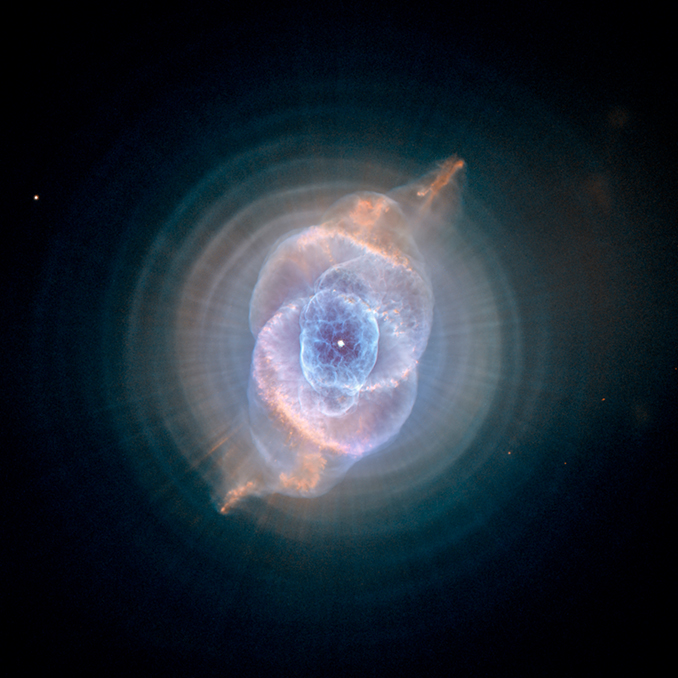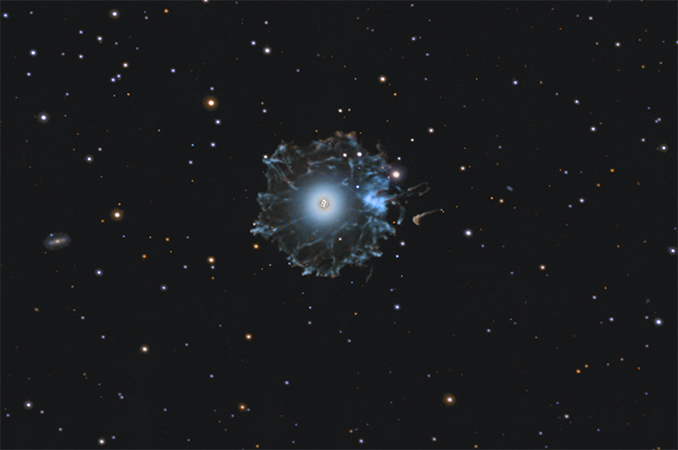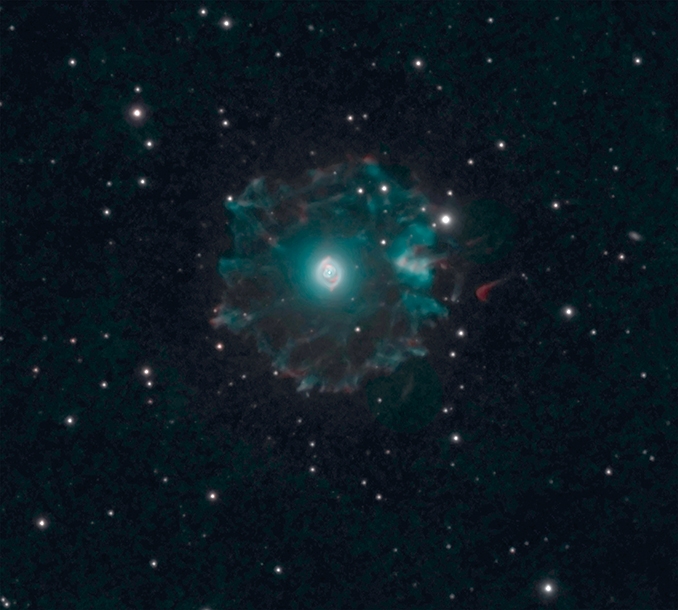
The Cat’s Eye Nebula’s present-day popularity owes much to the Hubble Space Telescope’s dramatic portraits, though it was famous well over a century before Hubble was even conceived. In 1864, Sir William Huggins (1824–1910) took a spectrum of the object that not long after was catalogued as NGC 6543. It was the first spectrum of a planetary nebula and Huggins was able to distinguish nebulae from galaxies by their emission lines, characteristic of incandescent gas.
The Cat’s Eye is a marvellous planetary nebula in Draco that’s well on show at this time of the year, can be found and observed through a small- to medium-aperture telescope, and is worthy of its illustrious history.

How to observe:
The Cat’s Eye Nebula (NGC 6543 and Caldwell 6) lies in the far northern sky among the stars of Draco, the Dragon. This part of the sky is circumpolar at mid-northern latitudes, and the planetary culminates high overhead on summer nights. The Cat’s Eye shouldn’t be too hard to locate as, shining at magnitude +8.1, it’s one of the brighter planetaries and has the added bonus of a high surface brightness.
Conduct a search around 13 degrees north of the ‘Head of Draco’ asterism (magnitude +2.2 gamma [γ] draconis [Eltanin] is the brighter of its four stars) for magnitude +3.1 Altais (delta [δ] Draconis) and magnitude +3.2 zeta (ζ) Draconis. These stars lie around 12 degrees apart and the Cat’s Eye Nebula lies just south of the midway point between them.
Observing at low magnification through an 80–100mm (three- to four-inch) telescope, the nebula will look decidedly like an out- of-focus ninth-magnitude blue-green star, owing to its diminutive 23” ×17” form. However, ramping up the power as far as conditions allow and adding an O-III filter to the light train will bring the Cats Eye to life.
For imagers and owners of large telescopes there is an interesting challenge to record IC 4677, a nebula lying very close to the Cat’s Eye that until recently was thought to be a galaxy. In fact, it is the brightest part of a halo of material that envelops the Cat’s Eye.


